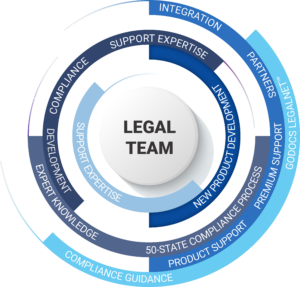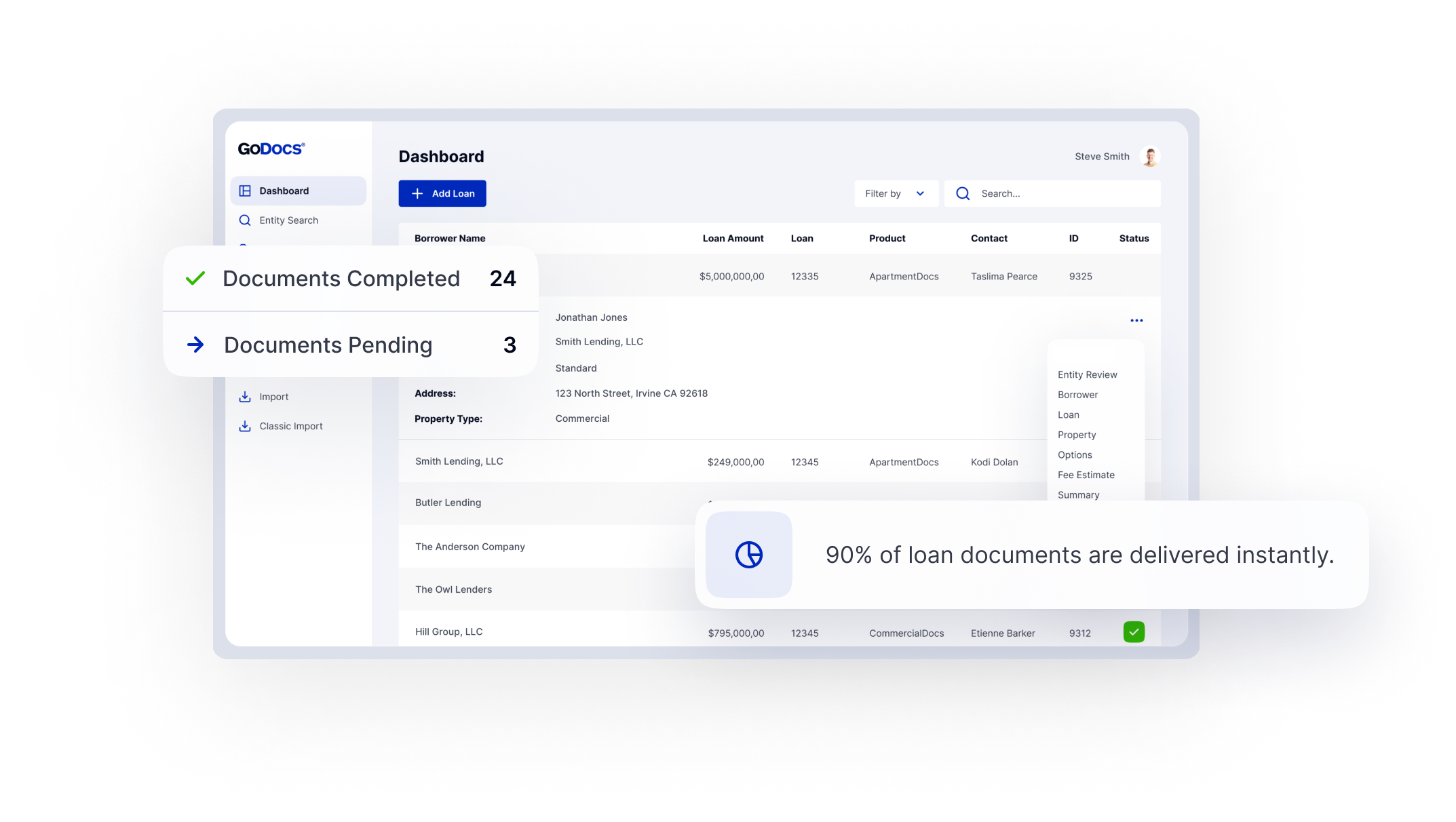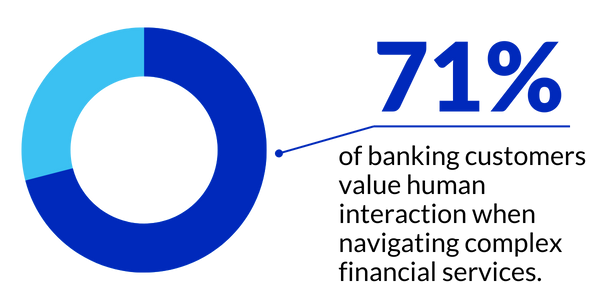California and New York Laws Requiring Consumer-Style Unsecured and C&I Financing Disclosures Put Lenders to the Test
Groundbreaking California Senate Bill 1235 (S.B. 1235) and New York Senate Bill 5470-B (S.B. 5470) codified Truth in Lending Act-like disclosure laws for commercial unsecured loans and “commercial and industrial” (“C&I”) loans in their respective states. Commercial lenders making loans in California and New York are scrambling to determine what new disclosures need to be made to potential borrowers pursuant to these new laws; when they need to make such disclosures; and how they will need to conform their current loan underwriting, documentation, and closing processes to comply with such laws. Commercial lenders nationwide also are questioning whether similar laws soon will be adopted in other states thereby creating disclosure compliance requirements that may differ between various jurisdictions. What is clear at this time is that commercial lenders making unsecured commercial loans and C&I loans in California and New York will need to make changes in their borrower disclosure materials and procedures.
California Disclosure Law
Overview and Applicability
 California S.B. 1235, which was signed into law on September 30, 2018, requires “a provider who facilitates commercial financing to a recipient … to disclose specified information relating to that transaction to the recipient at the time of extending a specific offer of commercial financing, and to obtain the recipient’s signature on that disclosure before consummating the commercial financing transaction.”1 The final regulations issued pursuant to this bill (the “Final CA Disclosure Regulations”) were approved by the California Department of Financial Protection and Innovation (“CA DFPI”) on June 9, 2022, and took effect on December 9, 2022.
California S.B. 1235, which was signed into law on September 30, 2018, requires “a provider who facilitates commercial financing to a recipient … to disclose specified information relating to that transaction to the recipient at the time of extending a specific offer of commercial financing, and to obtain the recipient’s signature on that disclosure before consummating the commercial financing transaction.”1 The final regulations issued pursuant to this bill (the “Final CA Disclosure Regulations”) were approved by the California Department of Financial Protection and Innovation (“CA DFPI”) on June 9, 2022, and took effect on December 9, 2022.
In interpreting “a provider who facilitates commercial financing,” the Final CA Disclosure Regulations establish obligations for non-bank lenders and other finance companies, such as private money lenders and fintech lenders, and brokers with applicability to commercial financing transactions described as closed-end transactions, commercial open-end credit plans, factoring transactions, general asset-based lending transactions, lease financing, and sales-based financing.2 Importantly, the Final CA Disclosure Regulations exempt traditional depository institutions and commercial financing offers greater than $500,000.3
The Final CA Disclosure Regulations also specify that not all potential borrowers qualify as “recipients” under the law. The duty to disclose applies “only to recipients whose business is principally directed or managed from California.” [Emphasis added.] To determine if a recipient is principally directed or managed from California, a provider can rely on a written statement from the recipient, or on the address provided by the recipient on the application for financing, to determine if the law applied to the proposed financing transaction. Thus, it should be noted that it does not matter if the provider is a California entity or not.
This means that, with a few exceptions, the duty to disclose attaches to lenders nationwide for all commercial loans not secured by a mortgage or deed of trust equal to or less than $500,000 whenever they are making such loans to California-based borrowers.
Disclosure and Signature Requirements
The disclosures required by the Final CA Disclosure Regulations are broader than those required by the Federal Truth in Lending Act (“TILA”). They include “detailed formatting requirements, including specific requirements for font sizes, … column- width ratio, and disclosure cell formatting.”4 The disclosures require the following: (i) descriptions of the Annual Percentage Rate (“APR”) for the proposed loan, (ii) the term of the loan, (iii) the total amount of funds provided under the loan, (iv) the prepayment terms for the loan, (v) the total dollar cost of the financing, and (vi) the method, frequency, and amount of the loan payments. Finally, these disclosures must be provided to the recipient at the time of extending the financing offer and at the time of any subsequent change to the terms of such offer. This means that if the loan terms change during the loan processing and underwriting processes, updated disclosures are required.
width ratio, and disclosure cell formatting.”4 The disclosures require the following: (i) descriptions of the Annual Percentage Rate (“APR”) for the proposed loan, (ii) the term of the loan, (iii) the total amount of funds provided under the loan, (iv) the prepayment terms for the loan, (v) the total dollar cost of the financing, and (vi) the method, frequency, and amount of the loan payments. Finally, these disclosures must be provided to the recipient at the time of extending the financing offer and at the time of any subsequent change to the terms of such offer. This means that if the loan terms change during the loan processing and underwriting processes, updated disclosures are required.
One difficult aspect of these new disclosure regulations is that there is no safe harbor form provided as a template for lenders to use. Each lender is required to draft its own disclosure form in its attempt to comply with the Final CA Disclosure Regulations issued pursuant to this new law.
Equally problematic for lenders is that the regulatory requirements for what the new disclosure form must look like and what information it must contain are strict and  not easy to understand for purposes of compliance. For instance, “[t]he top of the disclosure form must state in no less than 16-point Times New Roman font ‘OFFER SUMMARY FOR __________________ (a one- to five-word description of what the financing is for, such as OFFER SUMMARY FOR LEASE FINANCING),’” and “throughout the offer summary, depending on what column is being disclosed, font size ranges from anywhere between 10- to 16-point Times New Roman font. There are columns which must be set up with a 3:3:7 ratio and no column may contain an explanation that exceeds 60 words.”5
not easy to understand for purposes of compliance. For instance, “[t]he top of the disclosure form must state in no less than 16-point Times New Roman font ‘OFFER SUMMARY FOR __________________ (a one- to five-word description of what the financing is for, such as OFFER SUMMARY FOR LEASE FINANCING),’” and “throughout the offer summary, depending on what column is being disclosed, font size ranges from anywhere between 10- to 16-point Times New Roman font. There are columns which must be set up with a 3:3:7 ratio and no column may contain an explanation that exceeds 60 words.”5
A final aspect of the disclosure requirements is that a signed copy of the Final CA Disclosure Regulations must be obtained prior to the consummation of the loan. Above the signature on the offer summary, the following text must be included, “Applicable law requires this information to be provided to you to help you make an informed decision. By signing below, you are confirming that you received this information.”6 Following the signature and date, a separate section is required called “Itemization of Funds” where the financing offer is broken down to disclose broker fees, appraisal fees, and any other fees.
Yikes! Did you get all that? Without a template to follow, each provider who facilitates commercial financing is left to figure out how to disclose properly so as to not be in violation of the rigid formatting requirements.
Enforcement
CA DFPI has the right to enforce violations of the Final CA Disclosure Regulations and classify them as being unfair, deceptive, or abusive acts in violation of the California Consumer Financial Protection Act. At this time, it is unclear exactly what the punishment would be for such violations; however, what is clear is that an extra burden has been placed on providers, financers, and brokers of commercial unsecured loans and C&I loans to disclose (and redisclose) detailed facts about the specific offer of commercial financing being offered to California–based business entities/borrowers on loans less than or equal to $500,000.
View the White Paper Instantly
Click through to view the Commercial Lending White Paper: Synchronizing Doc Gen Automation and the Attorney Relationship. The white paper walks you through the intersection between attorneys and technology.
New York Disclosure Law
Overview and Applicability
The New York Department of Financial Services (“NY DFS”) promulgated its long-awaited final rule regarding New York Senate Bill 5470-B and the subsequent New York Senate Bill 898, which set forth the state’s Commercial Finance Disclosure Law (“CFDL”), on February 1, 2023. Although the CFDL took effect on January 1, 2022, the NY DFS delayed the effective date of the operative provisions of the CFDL pending its issuance of the implementing regulations. After a six-month notice period, compliance with the CFDL becomes mandatory on August 1, 2023. Following  in the footsteps of the Final CA Disclosure Regulations, these laws also impose disclosure requirements on “providers” of commercial unsecured loans and C&I loans in much the same way that TILA does for consumer loans.
in the footsteps of the Final CA Disclosure Regulations, these laws also impose disclosure requirements on “providers” of commercial unsecured loans and C&I loans in much the same way that TILA does for consumer loans.
According to a February 1, 2023 press release from the NY DFS, the CFDL “requires certain providers of commercial financing to provide standardized disclosures to potential borrowers at the time financing offers are extended.” These standardized disclosures will help businesses and individuals understand and compare the terms of different commercial financing offers. Superintendent of Financial Services Adrienne A. Harris said, “clear and easy-to-compare disclosures are paramount as entrepreneurs and small businesses evaluate financing. The new regulation aims to improve fairness and transparency in the financing process, so that entrepreneurs and New York businesses can effectively evaluate and choose the best offer available to them.”7
The CFDL defines “commercial financing” to include sales-based financing, closed-end commercial financing, open-end commercial financing, factoring transactions, lease financing, and general asset-based financing.8 When the CFDL was initially approved, it was to apply to all commercial unsecured and C&I financing transactions in an amount equal to or less than $500,000; however, the State of New York promptly expanded the breadth of the CFDL to apply to commercial financing transactions equal to or less than $2,500,000. Much like the Final CA Disclosure Regulations, the CFDL only applies to “recipients” if: (i) the recipient’s business is principally directed or managed from New York; or (ii) the recipient is a legal resident of New York (if a natural person) and exempts traditional financial institutions from disclosure obligations.9
This means that, with a few exceptions similar to those in the Final CA Disclosure Regulations, the duty to disclose attaches to lenders nationwide for all commercial loans not secured by a mortgage or deed of trust equal to or less than $2,500,000 whenever they are making such loans to New York-based borrowers.
Contact us today to learn how GoDocs effortlessly tailors loan documents to keep up with the ever-changing legislative landscape.
Disclosure and Signature Requirements
The disclosures required by the CFDL also contain detailed formatting and content requirements. “At the top of the disclosure, centered on the page or other display medium the provider shall print “OFFER SUMMARY” in bold font, followed by a one-to-five-word description of the type of product offered (e.g. “Merchant Cash Advance”), which may include the financer’s branding terminology.” At the bottom of the disclosure, below any other information required to be disclosed by the CFDL, the provider must include the following statement: “Applicable law requires this information be provided to you to help you make an informed decision. By signing below, you are confirming you received this information.”10 Specific fonts, font sizes, signature block specification, and the fact that these disclosures must be given to the recipient as its own separate document and not as part of other disclosures or contracts are a small sampling of the formalities that must be followed when complying with this new law.
While the CFDL varies slightly depending on the type of commercial financing involved, the following are a list of potentially applicable disclosures that must be made to the borrower:
Contact us today to learn how GoDocs effortlessly tailors loan documents to keep up with the ever-changing legislative landscape.
(i)
the finance charge;
(ii)
either the estimated APR or the APR;
(iii)
the total repayment amount;
(iv)
the payment amounts (and with open-ended commercial financing, the payment frequency and amounts);
(v)
other potential fees;
(vi)
a description of the collateral (and with factoring transactions, a description of the receivables purchased and any additional collateral);
(vii)
the term or estimated term and disclosure of any prepayment penalties for all types of financing offerings except for factoring transactions;
(viii)
the total amount of the commercial financing, and the disbursement amount, if different from the financing amount, after any fees are deducted or withheld at disbursement; and
(ix)
if applicable, open-ended financing requires disclosure of the maximum amount of financing and the amount scheduled to be drawn at time of the offer, and factoring transactions require disclosure of the amount of the receivables purchase price paid to the recipient and the amount disbursed to the recipient.
Much like the Final CA Disclosure Regulations, the lack of a template to follow, leaves each provider who facilitates commercial financing struggling to disclose properly and not to be in violation of the rigid formatting requirements.
Enforcement

Unlike the Final CA Disclosure Regulations, the CFDL has codified specific monetary and civil penalties for violations of their disclosure laws. “Upon a finding … that a provider has violated the provisions of this article … the provider shall be ordered to pay … a sum not to exceed two thousand dollars for each violation or where such violation is willful ten thousand dollars.”11 In addition to these monetary penalties, if a provider has been found to have “knowingly violated” the CFDL, it could receive a preliminary or permanent injunction on behalf of any recipient affected by the violation.
Conclusion
As two of the most influential financial regulators in the United States, California and New York have intensified disclosure requirements for providers who facilitate commercial unsecured and C&I financing offerings to recipients. Lenders should expect that the federal government and states will continue to be active in this area – e.g., Utah’s own commercial financing disclosure law just took effect on January 1, 2023,12 Virginia’s law took effect on November 1, 2022,13 and proposed legislation has been introduced in Connecticut,14 North Carolina,15 and Illinois.16 In addition, federal legislation was introduced in the United States House of Representatives (the Small Business Lending Disclosure Act) in November 2021, and thus, Lenders should be aware of and determine how they are going to comply with these laws. Although these laws establish a clear duty to make TILA-like disclosures, they will be sufficiently divergent among the states so that in practice, it may mean separate procedures to implement. In this respect, lenders should engage with their legal counsel to assist in navigating these laws, including drafting the required state-specific disclosure forms.
Can You Handle the “Truth” in Lending? Here at GoDocs, we support each lender’s approach to the changes in disclosure requirements prompted by the Final CA Disclosure Regulations and the CFDL, among others, as pure business decisions. Looking forward, the enactment of similar laws in most, if not all, states seems increasingly likely as the trend catches on in state legislatures. As a lender, perhaps you would like the ability to upload the state-specific disclosure forms provided by your legal counsel to your GoDocs loan documentation packages or to discuss with GoDocs other customization options recommended to you by your legal counsel. Whatever a lender’s business decision, GoDocs is poised to automate your response.
GoDocs is the market leader in automated commercial loan document generation, and we are committed to being on the cutting edge of all legal matters related to commercial lending. We have the flexibility to provide you with options to tailor your loan documents to the seismic changes that periodically happen with legislative decisions relating to commercial lending. Where else can you get that type of expertise and flexibility?
Attorney-Powered Doc Gen Automation
 Backed by the sharpest legal minds in the industry, GoDocs, is built, managed, developed, and vetted by powerhouse attorneys with decades of commercial lending experience working for Am Law 100 firms.
Backed by the sharpest legal minds in the industry, GoDocs, is built, managed, developed, and vetted by powerhouse attorneys with decades of commercial lending experience working for Am Law 100 firms.
With an exceptional combination of legal expertise and extensive commercial lending experience, plus a quarter century of producing commercial loan documents, it’s evident just how effectively commercial lending risk is mitigated. Our proven methodology ensures success, offering the best loan documents in the industry.
This level of experience and knowledge leaves you with automated docs for both standard and complex loans that never require additional time, or money, towards attorneys. The proof is in the zero claims when thousands of loan documents are generated each month with loan complexities and loan amounts ranging from $500K to $50+MM.
1 S.B. 1235 Commercial Financing: Disclosures, (2017-2018), (CA 2018) https://leginfo.legislature.ca.gov/faces/billTextClient.xhtml?bill_id=201720180SB1235.
2 JDSUPRA: Look Inside: California Commercial Financing Disclosure Regulations, July 22, 2022, https://www.jdsupra.com/legalnews/look-inside-california-commercial-4789089/.
3 CA S.B. 1235, Cal. Fin. Code § 22801: The Final CA Disclosure Regulations also exempt (a) lenders regulated under the federal Farm Credit Act; (b) commercial financing transactions secured by real property; (c) commercial financing transactions in which the recipient is a vehicle dealer, vehicle rental company, or affiliated company, and meets other specified requirements; (d) a lender who makes no more than one applicable transaction in California in a 12-month period or a lender who makes five or fewer applicable transactions that are incidental to the lender’s business in a 12-month period; and (e) true leases, but will apply to bargain-purchase leases.
4 JDSUPRA: Look Inside: California Commercial Financing Disclosure Regulations, July 22, 2022.
5 Id.
6 Id.
7 Department of Financial Services: Superintendent Adrienne A. Harris Adopts Updated Regulation For Disclosure Requirements For Commercial Financing, https://www.dfs.ny.gov/reports_and_publications/press_releases/pr202302011, February 1, 2023.
8 S.B. 5470-B §801, Commercial Finance Disclosure Law Final Disclosures.
9 Financial Services Law (FIS) CHAPTER 18-A, ARTICLE 8, §802: In addition to (a) financial institutions, the CFDL also exempts: (b) a person acting in its capacity as a technology services provider, such as licensing software and providing support services, to an entity exempt under this section for use as part of the exempt entity’s commercial financing program; (c) lenders regulated under the federal Farm Credit Act (12 U.S.C. Sec 2001 et seq.); (d) a commercial financing transaction secured by real property; (e) a lease as defined in section 2-A-103 of the uniform commercial code; (f) any person or provider who makes no more than five commercial financing transactions in this state in a 12-month period; (g) an individual commercial financing transaction over $2,500,000; and (h) a commercial financing transaction in which the recipient is a dealer, a rental vehicle company, or an affiliate of such a company pursuant to a commercial financing agreement or commercial open-end credit plan of at least $50,000, including any commercial loan made pursuant to such a commercial financing transaction. https://www.nysenate.gov/legislation/laws/FIS/802
10 New York State Department of Financial Services, New 23 NYCCR 600: Disclosure Requirements For Certain Providers of Commercial Financing Transactions, Page 11, https://www.dfs.ny.gov/system/files/documents/2023/01/rf_finservices_23nycrr600_text.pdf.
11 N.Y. Fin. Serv. §812(a).
12 UT Code § 7-27-101 et seq.
13 Code of Virginia, Chapter 22.1, (§§ 6.2-2228 through 6.2-2238).
14 Connecticut Committee Bill No. 745, January Session 2021, (Connecticut 2021).
15 General Assembly of North Carolina, Session 2021- “Small Business Truth in Financing Act”, Section 1, Chapter 53, Article 26, §§53-440 through 53-459, H.B. DRH10488-MUf-27A, 2021.
16 Illinois General Assembly, 103rd General Assembly, S.B.2234, Business Truth In Lending Act.







